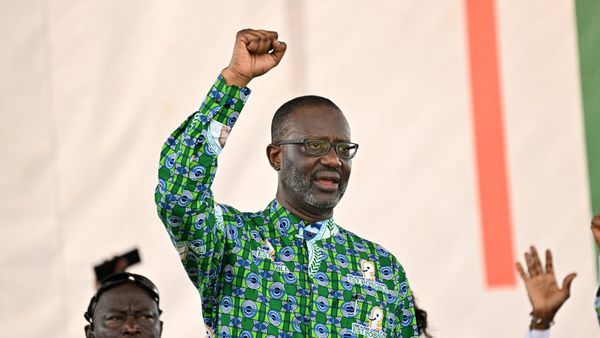
In the transition to net zero, the key challenge for Australia is to reduce greenhouse gas emissions whilst balancing energy security.
The truth is, finding this balance will remain impossible as long as we continue to equate energy security with fossil fuel expansion. Climate security cannot be treated as a secondary consideration, disconnected from our economic future. Climate security is our economic future.
Unfortunately, this isn’t the message underpinning the government’s recently released Future Gas Strategy.
In this report, the government recommends an expansion of gas development in Australia, thereby ensuring that natural gas will continue as a firm component of Australia’s power mix until 2050. The strategy positions natural gas as a vital export underpinning a wide range of economic activity, and providing essential firming services as the renewable power generation capacity expands and coal-fired power exits.
In doing so, the report fails to address the profound concerns associated with expanding fossil fuel projects within a rapidly warming globe.
The need to decarbonise the fossil fuel sector has never been more pressing and — as the International Energy Agency has made very clear — this means no new fossil fuel projects can be developed if the world is to remain within the safe limits of global heating and avoid the catastrophic consequences of an escalating climate emergency.
Abatement and offsets cannot counter the impact of gas
The report articulates what it describes as six core gas principles. The first principle, “Getting to net zero emissions by 2050”, argues that expanding natural gas is possible because gas usage can be abated or offset to meet Australia’s net zero commitments. According to the report, increased efficiency and electrification of processes, along with the replacement of gas with low-emission gases and offsetting remaining emissions, will ensure we meet our climate commitments while providing the energy security Australia needs.
In other words, the strategy blithely assumes that expanding gas is an economic priority and that abating or offsetting gas emissions is not only possible but actually the most effective way of achieving net zero.
The difficulty with this assumption is that the new gas projects being proposed are estimated to dramatically increase current emissions. This means that abatement and offsets cannot possibly counter the impact.
For example, the lifetime emissions from the proposed Burrup Hub expansion by Woodside in the Pilbara are estimated to be roughly 13 times Australia’s annual emissions and 30 times the total savings made by the current safeguard mechanism leading up to 2030.
The problem with carbon capture
What’s more, one of the key abatement measures proposed within the strategy, carbon capture sequestration (CCS), is itself far from perfect.
Questions remain about whether carbon capture technology is actually commercially viable — or just a Trojan horse used by fossil fuel lobbyists to gain entry to conversations about sustainable energy.
There is little evidence that CCS works at scale. To date, the only commercially active CCS project in Australia has been at the Gorgon project on Barrow Island in Western Australia. Despite an approval premised on capturing 80% of the Gorgon project’s emissions, during the 2020/21 financial year, failure leakage and error meant that emissions ranged from 157% to 226% above the environmental impact statement estimation. In total, the excess emissions that were not supposed to be in the atmosphere amounted to almost 16 million tonnes.
In late 2022, an analysis of carbon capture and storage programs found that several of the world’s largest CCS projects were significantly underperforming. Of the 13 flagship CCS schemes analysed by that global report, most captured much less CO2 than expected.
The danger in rationalising the expansion of fossil fuel with CCS, as the gas report does, is that new projects approved on this basis may well fail. If they do, they will release unapproved emissions, and that damage cannot be undone.
The strategy ignores the inevitable
The remaining gas principles set out in the report essentially argue that, in order for gas to remain affordable and for energy security to continue within a transitioning framework, the expansion and development of new gas supply projects is vital. This includes the promotion and development of new gas import facilities.
Unfortunately, these remaining principles do not make it clear that skyrocketing gas prices on the east coast of Australia are a direct product of the failure of successive governments to regulate the liquefied natural gas (LNG) export market. In the absence of new regulations, high gas prices are likely to increase.
Australia produces enormous quantities of gas, but we export almost all of it. Last year we exported nearly 81 million tonnes — nearly 90% of total production — thereby leaving only 10% for the domestic market.
As the export market expands, the cost of gas for the domestic consumer on the east coast will correspondingly expand.
There is no guarantee that supply from new projects will be directed to increase domestic supply and address pricing concerns.
The absence of a regulatory mechanism compelling producers to reserve a percentage of gas for the domestic market means that if exports continue to expand, domestic consumers will continue to compete with an international market. In other words, domestic consumers are paying international export prices for a resource extracted here in Australia.
A solution that’s missing from the strategy
The report does not propose any regulatory measures to address these concerns.
It suggests that domestic consumers will purchase Australian gas on the international market then store it in expensive new import facilities. But that idea is absurd and completely unnecessary.
Implementing new mandatory requirements compelling producers to retain a greater percentage of natural gas from existing projects for the domestic market would resolve pricing and supply concerns. Such a strategy would not undermine economic development or interfere with our reputation with trade partners. Rather, it would compel multinational gas producers to give appropriate regard to our national interest — incorporating both energy and climate security concerns — when extracting a public resource with a potent capacity to contribute to global warming.
Rather than risking our pathway towards net zero and our international climate commitments with unnecessary and unconscionable plans for fossil fuel expansion, the Australian government must reassess its priorities. Reserving supply from existing gas projects would be a good start.
This article was published in collaboration with 360info.







